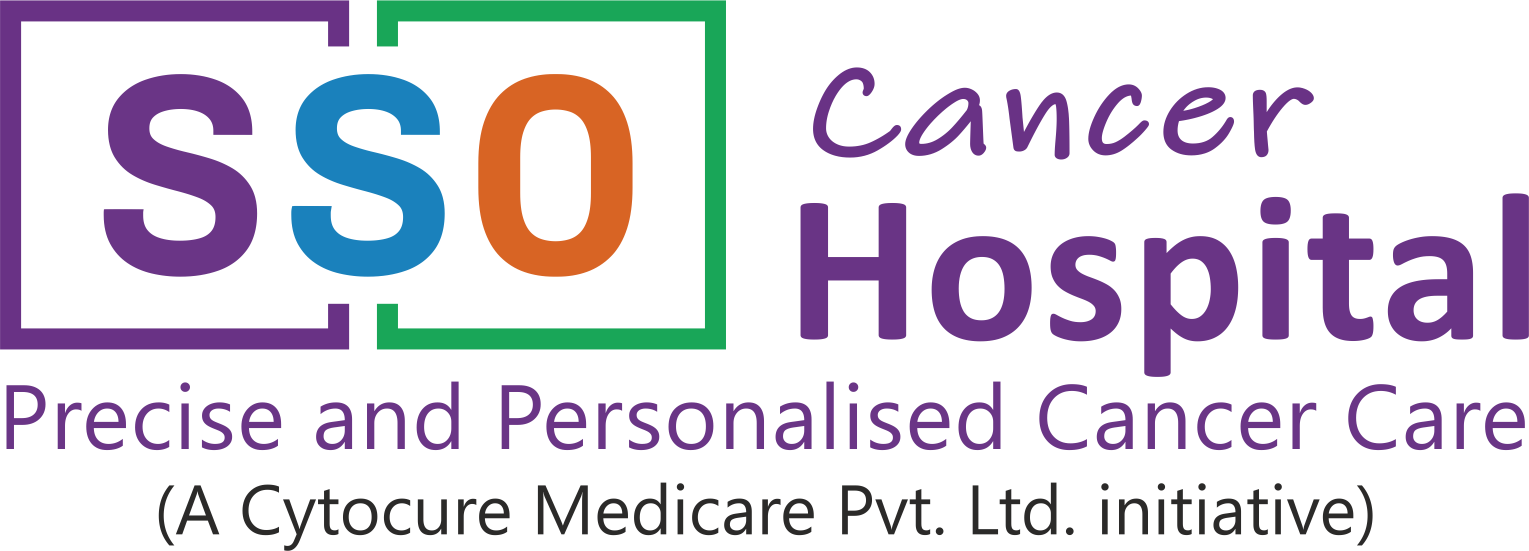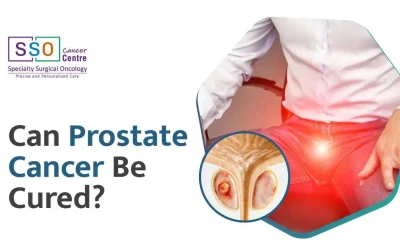Dr. Niharika Garach
Endometrial Cancer Stages and Treatment

Endometrial cancer, the most common cancer of the female reproductive system, is a complex and often emotionally challenging journey for those who are affected by it.
This guide aims to provide a comprehensive understanding of the various stages of endometrial cancer.
It offers invaluable information to empower individuals and their loved ones with the knowledge needed to navigate this journey confidently and resiliently.
What is Endometrial Cancer?
Endometrial cancer is a type of cancer that affects the endometrium, which is the inner lining of the uterus. It is the most common type of cancer in the female reproductive system.
Endometrial cancer typically begins in the cells lining the uterus and can potentially spread to other body parts if left untreated.
Risk Factors and Symptoms
Various factors can increase a person’s risk of developing endometrial cancer. These include obesity, hormone imbalances, age, family history, certain medical conditions, and estrogen without progesterone.
It is essential to be aware of the warning signs and symptoms. Prompt recognition and timely medical intervention can significantly improve the chances of successful treatment.
Diagnosing Endometrial Cancer
If you experience any symptoms or have risk factors for endometrial cancer, it is crucial to seek medical attention.
The diagnostic process usually involves a combination of physical examination, imaging tests (such as transvaginal ultrasound), and endometrial biopsy. These tests help oncologists evaluate the presence of cancer cells and determine the stage of the disease.
Staging in Cancer
Cancer staging is a standardized way to describe the extent and spread of cancer within the body.
It helps oncologists determine the most appropriate treatment plan and predict patients’ prognosis. The stages range from 0 to IV, with each stage indicating different characteristics of the cancer.
Stages of Endometrial Cancer
Stage 0 (Carcinoma in Situ):
In this stage, abnormal cells are found only on the surface of the inner lining of the uterus and have not spread into deeper tissues.
Stage I:
Cancer is confined to the uterus, with no spread to nearby lymph nodes or distant organs—subcategories within Stage I are based on the tumour’s size and extent.
Stage II:
Cancer has spread to the cervix but remains within the uterus. Lymph node involvement is still absent, as well as distant organ metastasis.
Stage III:
Cancer extends beyond the uterus and cervix, involving nearby pelvic organs such as the ovaries, fallopian tubes, or lymph nodes.
Stage IV:
Cancer has spread to distant organs, such as the lungs, liver, bones, or other distant sites.
Each stage has distinct considerations for treatment options, prognosis, and survival rates of endometrial cancer. It is crucial to consult with an endometrial cancer doctor in Mumbai to understand your specific stage and its implications for your case.
Treatment Options by Stage
The treatment of endometrial cancer depends on various factors, including the stage of the disease, the patient’s overall health, and their personal preferences.
Treatment options may include surgery, radiation therapy, chemotherapy, and hormone therapy. In some cases, a combination of these treatments may be recommended.
Surgery is often the primary treatment for endometrial cancer and may involve the removal of the uterus (hysterectomy) and nearby lymph nodes.
Radiation therapy uses high-energy rays to kill cancer cells, while chemotherapy uses drugs to destroy cancer cells throughout the body. Hormone therapy aims to alter hormone levels to prevent cancer cells from growing.
Get Screened
“Get screened for endometrial cancer regularly. Book your appointment now!”
Coping with Endometrial Cancer
A diagnosis of endometrial cancer can be emotionally challenging for patients and their loved ones. It is essential to address the emotional and psychological aspects of this journey.
Seeking support from family, friends, or support groups can provide comfort and guidance. Additionally, counseling and therapy can help individuals cope with the emotional impact of the disease.
Prevention and Risk Reduction
While it may not be possible to prevent all cases of endometrial cancer, confident lifestyle choices can help reduce the risk. Maintaining a healthy weight, exercising regularly, and adopting a balanced diet rich in fruits, vegetables, and whole grains can contribute to overall well-being and potentially reduce the risk of developing endometrial cancer. Regular check-ups and prompt medical attention for any concerning symptoms are also crucial.
Research and Advancements
Endometrial cancer research is continually advancing, with ongoing studies focused on improving detection methods, treatment options, and patient outcomes.
Clinical trials are vital in exploring new therapies and innovative approaches to managing this disease. Stay informed about the latest research and advancements through trusted medical sources and consult with oncologists to determine if you might be eligible to participate in any relevant clinical trials or research studies.
Understanding the stages of endometrial cancer is crucial for patients, caregivers, and individuals seeking knowledge about this disease.
Recognising the risk factors, symptoms, and diagnostic process makes early detection possible, leading to more effective treatment outcomes.
The concept of cancer staging helps oncologists plan personalised treatment approaches based on the characteristics and extent of the disease.
Each stage of endometrial cancer presents unique considerations for treatment options, prognosis, and survival rates. Surgery, radiation therapy, chemotherapy, and hormone therapy are available treatment modalities, often combined.
It is essential to consider the emotional and psychological aspects of a cancer diagnosis, seeking appropriate support and coping strategies.
Reducing the risk of endometrial cancer involves adopting a healthy lifestyle, maintaining a healthy weight, and staying physically active.
Regular check-ups and prompt medical attention for concerning symptoms can contribute to early detection and improved outcomes.
Ongoing research and advancements in endometrial cancer provide hope for better detection methods, treatment options, and overall disease management.
Staying informed and exploring potential participation in clinical trials can contribute to progress in this field.
Conclusion
raising awareness about endometrial cancer, understanding its stages, and emphasizing the importance of early detection and personalized treatment are key takeaways from this comprehensive guide.
By empowering individuals with knowledge, we can make a difference in the fight against endometrial cancer and improve the lives of those affected.
Diet to Reduce Colorectal Cancer risk
HOME Videos Diet to Reduce Colorectal Cancer Risk AuthorSurgical Oncologist MBBS, MS, MChKnow the...
Thyroid Cancer: Types, Diagnosis & Treatment
HOME Videos Thyroid Cancer: Types, Diagnosis & Treatment AuthorSurgical Oncologist MBBS, MS,...
Does Robotic Surgery Improve Patient survival?
HOME Videos Does Robotic Surgery Improve Patient Survival AuthorSurgical Oncologist MBBS, MS,...
Prostate Cancer: Warning Signs and Early Detection
Prostate cancer warning signs, risk factors, and early detection methods. Common symptoms and when to seek medical attention
Prostate Cancer Treatment: Types, Options, and Side Effects
Prostate cancer treatment: Understand types, options, side effects, and decision-making. Prostate cancer types are adenocarcinoma and neuroendocrine carcinoma.
Can Prostate Cancer Be Cured? Treatment and Prognosis
Comprehensive guide on prostate cancer: understanding, treatment options, prognosis, prevention, and ongoing research for informed decisions.


 Blogs
Blogs





